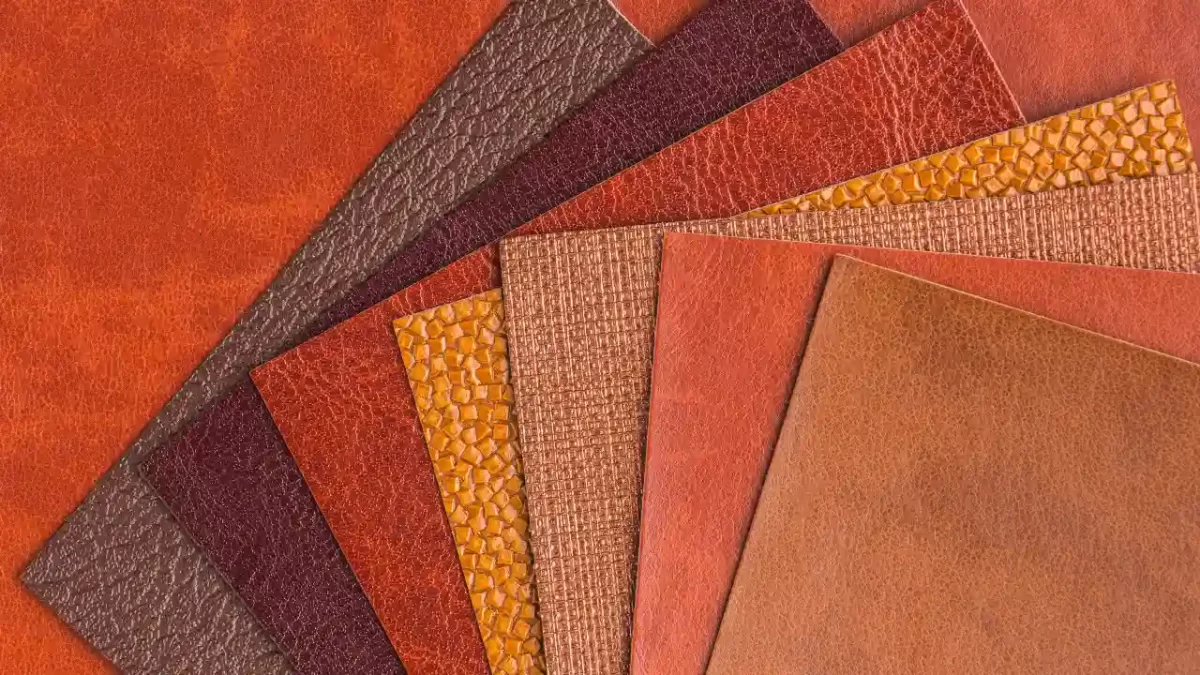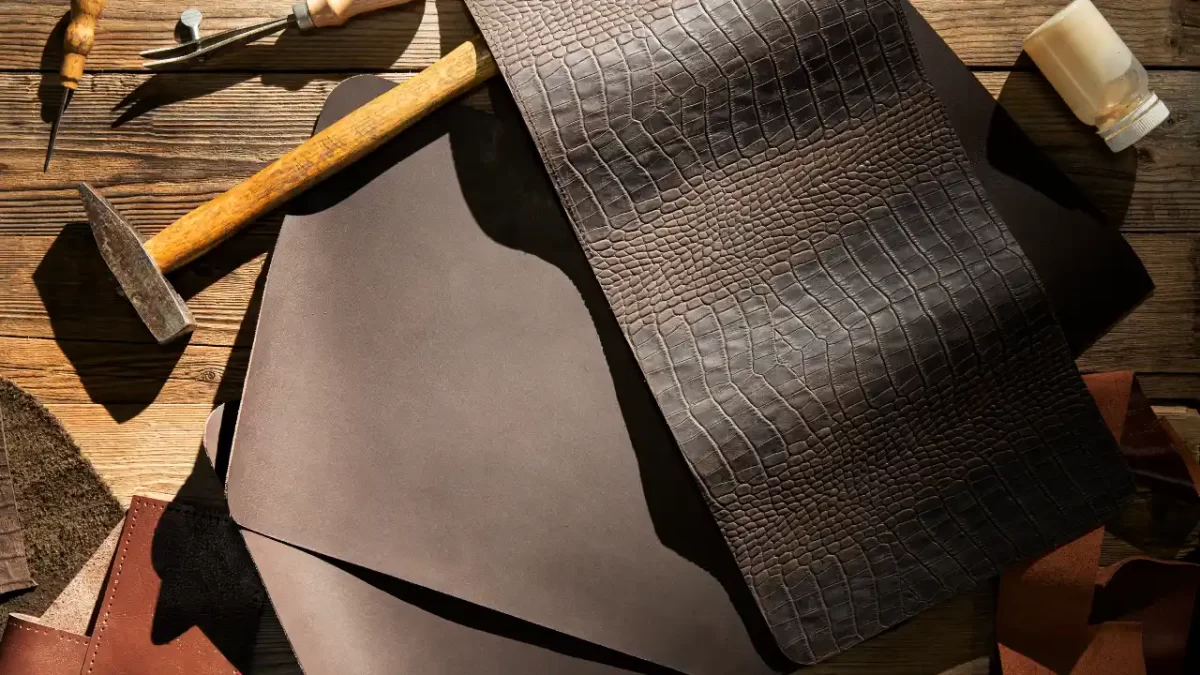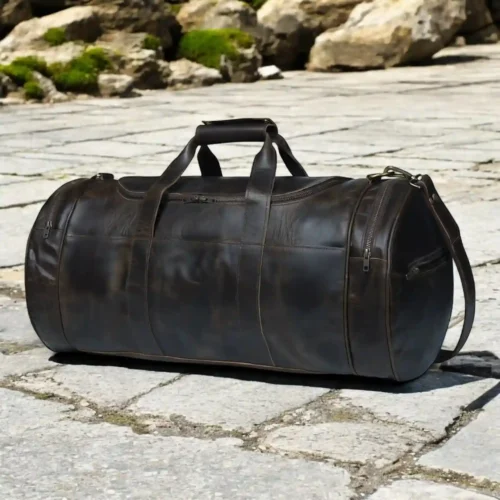🚛 FREE SHIPPING | LIFETIME REPAIR WARRANTY | 20% Sale: “FREEDOM20”

PVC leather, a type of synthetic leather, is made from polyvinyl chloride (PVC) and often coated on fabric, such as polyester or nonwoven material. This material mimics the texture and appearance of genuine leather, making it a popular alternative. PVC and leather differ significantly in terms of durability and maintenance, with PVC leather being more affordable and easier to clean. Understanding what PVC leather entails is crucial for making informed choices about leather bags and other products. When considering leather and PVC options, it’s important to weigh the pros and cons of each material based on your specific needs.
PVC leather, or polyvinyl chloride leather, is a synthetic material designed to mimic the appearance and feel of genuine leather. Known for its durability and affordability, PVC leather is widely used in a variety of applications, from furniture to clothing. Unlike genuine leather, which comes from animal hides, PVC leather is made from a plastic polymer, making it a more environmentally friendly and versatile option. When considering what is PVC leather, it’s important to note the significant differences between PVC and leather in terms of maintenance and cost. Leather PVC products are often easier to clean and maintain, making them a popular choice for those looking for a low-maintenance alternative to real leather.
PVC leather is primarily made from polyvinyl chloride (PVC), a type of plastic. This material is created by combining PVC with stabilizers, plasticizers, and lubricants to achieve the desired flexibility and durability. The manufacturing process involves coating a fabric base, usually polyester or cotton, with layers of PVC to create a durable and leather-like texture. The resulting leather PVC material offers a similar look and feel to genuine leather but is more resistant to wear and tear. Understanding real vs fake leather is essential when selecting products, as PVC leather provides a cost-effective and versatile alternative to traditional leather options.
PVC leather, also known as polyvinyl chloride leather, is widely used in various industries due to its versatility and durability. From furniture upholstery to automotive interiors, PVC leather provides an affordable and low-maintenance alternative to traditional leather. What is PVC leather often asked in the context of fashion, as it is commonly used in bags, shoes, and accessories. The unique combination of PVC and leather attributes allows manufacturers to create high-quality products that are resistant to wear and tear. Whether you are considering a women’s leather duffle bag or stylish footwear, leather PVC offers a range of options that are both practical and aesthetically pleasing.

PVC leather stands out as a cost-effective alternative to genuine leather due to its synthetic nature and production process. Unlike genuine leather, which requires animal hides, PVC leather is made from polyvinyl chloride, making it significantly cheaper to produce. This affordability is a key factor when consumers ask what is PVC leather and why it’s a popular choice. The lower production costs of PVC and leather combinations translate to more budget-friendly products for consumers. Additionally, the maintenance costs are lower, as cracked leather repair is less of an issue with leather PVC items. For those looking for stylish and durable products without the high price tag, PVC leather offers an excellent alternative to traditional leather.
PVC leather and genuine leather differ significantly in terms of material composition, durability, and cost. PVC leather, also known as polyvinyl chloride leather, is a synthetic material created by applying a layer of PVC to a base material such as fabric. This process results in a durable, water-resistant, and cost-effective alternative to genuine leather. On the other hand, genuine leather is made from animal hides and is prized for its natural look, feel, and longevity. While genuine leather is often associated with luxury items like brown leather briefcases and vintage messenger bags, PVC leather is widely used in more affordable products, including leather sling bags for ladies and leather sling bag men’s. Understanding what is PVC leather helps consumers make informed choices between these materials based on their needs and budget.
When considering sustainability, PVC leather presents both advantages and challenges. PVC leather is synthetic, meaning it does not involve animal cruelty, which makes it an ethical choice for many consumers. Additionally, it often lasts longer than cheaper types of real leather, reducing the frequency of replacements and, consequently, waste. However, the production of PVC leather involves chemicals that can be harmful to the environment. Unlike genuine leather, which can biodegrade, PVC leather does not decompose easily, contributing to landfill waste. The question of PVC and leather sustainability often leads consumers to explore alternatives like PU leather, which is considered more environmentally friendly. For those interested in leather and PVC products like leather messenger bags for women, balancing ethical concerns with environmental impact is key to making a sustainable choice.

PVC leather, also known as polyvinyl chloride leather, is a popular synthetic alternative to genuine leather. Understanding what is PVC leather and how it compares to real leather can help consumers make informed decisions about PVC and leather products.
PVC leather offers several benefits, making it a widely used material in various industries. One of the main advantages is its cost-effectiveness. PVC and leather combinations are significantly cheaper than genuine leather, allowing for more affordable products. Additionally, PVC leather is highly durable and resistant to water and stains, making it ideal for items like furniture and car interiors. Unlike genuine leather, PVC leather requires minimal maintenance and can be easily cleaned with a damp cloth. This synthetic material is also available in a wide range of colors and textures, providing versatility in design. As a result, leather PVC is often used in fashion accessories, such as bags and shoes, offering a stylish yet economical alternative to real leather.
Despite its advantages, PVC leather has some notable disadvantages. One significant drawback is its environmental impact. The production of PVC leather involves the use of harmful chemicals, which can be detrimental to the environment. Additionally, PVC leather is not biodegradable, contributing to long-term waste issues. In terms of comfort and breathability, PVC leather falls short compared to genuine leather, as it can become uncomfortable in extreme temperatures. Moreover, PVC leather may crack and peel over time, particularly with heavy use, leading to a shorter lifespan for products made from this material. While leather and PVC combinations offer an affordable alternative, they may not provide the same level of luxury and longevity as genuine leather.
PVC leather, also known as polyvinyl chloride leather, is a popular synthetic alternative to genuine leather. Understanding what is PVC leather and how to care for it can significantly extend its lifespan and maintain its appearance. Cleaning and maintaining PVC and leather products effectively ensures they remain attractive and durable.
To clean PVC leather, start by dusting off any loose dirt with a soft cloth. For more thorough cleaning, mix a solution of mild soap and warm water. Dampen a cloth with this solution and gently wipe the surface of the leather PVC. Avoid soaking the material as excessive water can damage it. After cleaning, use a dry cloth to remove any soap residue. For stubborn stains, a small amount of rubbing alcohol on a cotton swab can be effective. Test in an inconspicuous area first to ensure it does not damage the PVC and leather surface.
Maintaining PVC leather involves regular care to keep it looking its best. Avoid placing PVC and leather items in direct sunlight, as prolonged exposure can cause the material to fade and crack. Use a PVC conditioner or a mixture of water and vinegar to keep the material supple and prevent it from drying out. Store leather and PVC products in a cool, dry place when not in use. For larger items like furniture, consider using covers to protect them from dust and spills. By following these simple maintenance tips, you can ensure that your PVC leather items stay in excellent condition for years.
Is PVC Leather Right for You?
PVC leather is a synthetic material made from polyvinyl chloride, designed to mimic the look and feel of genuine leather. Understanding what is PVC leather can help you decide if it suits your needs. PVC and leather products offer durability, easy maintenance, and cost-effectiveness, making them ideal for furniture, clothing, and accessories. Leather and PVC combinations provide the aesthetic appeal of leather without the high price tag. When considering leather PVC, weigh factors like environmental impact and personal preference for synthetic versus natural materials.
Choosing PVC leather depends on your specific requirements and values. If you prioritize affordability, ease of care, and versatility, PVC and leather options are excellent. However, if sustainability and natural materials are important, traditional leather might be preferable. Evaluating what is PVC leather in terms of both its benefits and drawbacks will guide you in making an informed decision. Ultimately, leather and PVC products can offer a practical and stylish solution for various applications, balancing cost and aesthetics.
FAQ
PVC leather is not real leather. It is a synthetic material made from polyvinyl chloride, designed to imitate the look and feel of genuine leather. Understanding what is PVC leather helps differentiate it from natural leather, which is made from animal hides. While PVC and leather share similar appearances, leather PVC is entirely man-made, offering a cruelty-free alternative to traditional leather.
When comparing PVC leather and other types of synthetic leather, it’s essential to consider your specific needs. PVC and leather alternatives both offer durability and ease of maintenance. However, leather and PVC materials tend to be more resistant to wear and tear, making them ideal for high-usage items. On the other hand, some synthetic leathers may offer better breathability and flexibility.
Yes, PVC leather can get wet. It is water-resistant due to its synthetic nature, making it an excellent choice for items exposed to moisture. However, it is essential to dry leather PVC items thoroughly after they get wet to prevent any potential damage or mold growth. This characteristic sets PVC and leather apart from genuine leather, which can be more susceptible to water damage.
No, PVC leather is not made from animals. It is a synthetic material crafted from polyvinyl chloride. Understanding what is PVC leather highlights its ethical advantage, as it provides an alternative to animal-derived products. Leather PVC offers a similar aesthetic without the use of animal hides, appealing to those seeking cruelty-free options.


